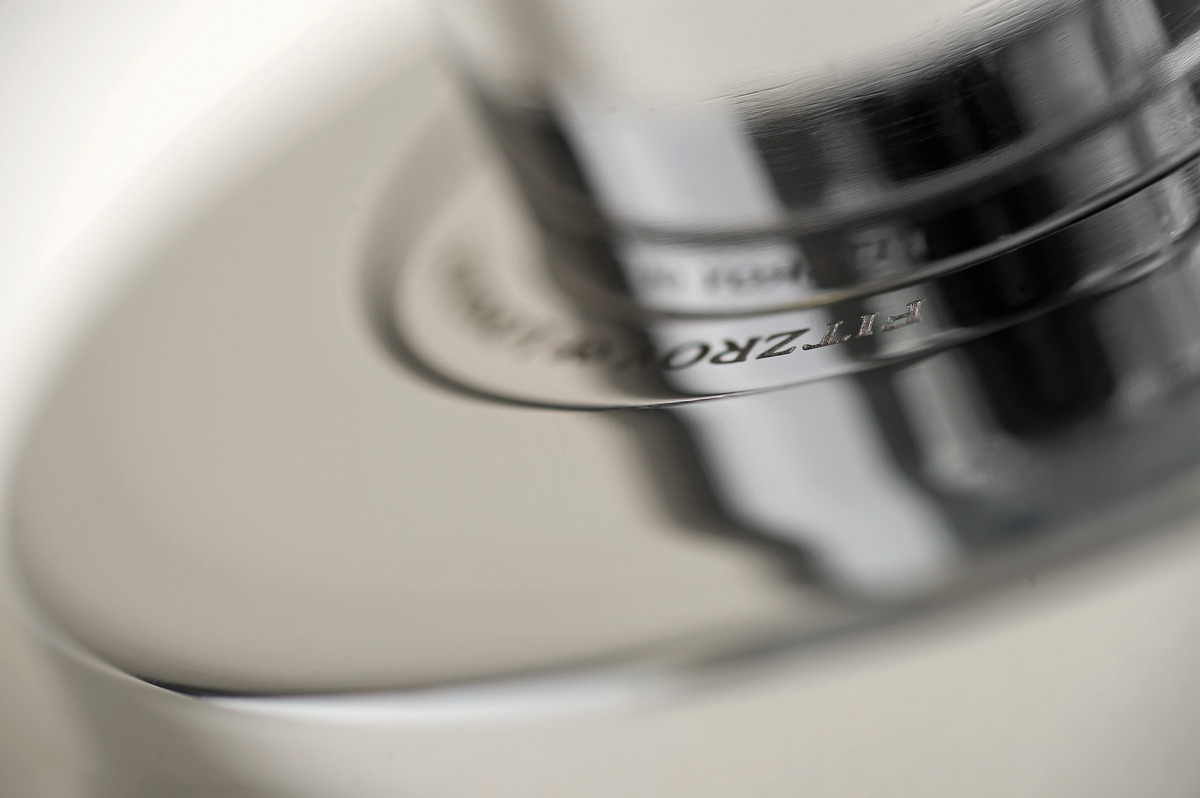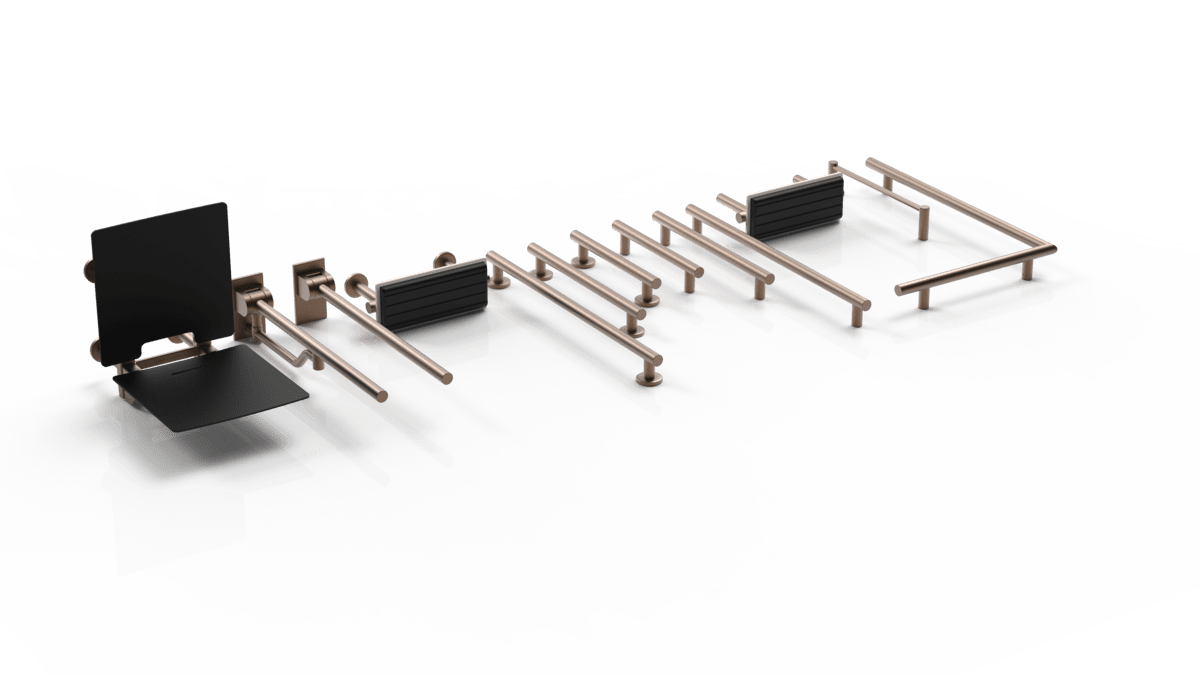Physical Vapour Deposition – or PVD for short – is a finishing technique used to deposit a very fine layer of decorative metal onto a separate metal base – usually brass or stainless steel. It’s a method we use to achieve a premium look on our luxury Doc M grab rails for a variety of reasons including aesthetics, durability and hygiene.
But what exactly is PVD and why is it so useful for accessible spaces in particular? Let’s take a look at the practicalities of this deluxe finishing technique.

What exactly is PVD finishing?
PVD stands for physical vapour deposition (also sometimes called thin film deposition). It’s a high-tech process involving a complicated series of steps that transforms solid metal like brass or nickel into a vapour using a super-heated gas called plasma. This process is carried out in a specialised vacuum chamber, where the metal parts being finished are suspended from a rack.
When the super-heated metal vapour comes into contact with the cooler surface of the base materials (for example, a stainless steel grab rail) the metal turns back into a solid on contact and coats the surface of the item. During this process, physical and chemical bonding occurs that physically fuses the two metals together, atom by atom. As such, PVD is not just a coating on the surface of another metal – it becomes part of the metal itself.
How durable is PVD?
A key advantage of PVD finishing is its durability. Some metals – such as brass, for example – are prone to tarnishing or discolouration over time and require cleaning with special products to keep them looking new. Other metals may not be durable enough to withstand years of cleaning with the antibacterial products often used in public settings, especially healthcare.
As well as the finish itself being extremely durable, PVD metals take on the inherent qualities of the base metal – so PVD brass applied to stainless steel will never tarnish, and PVD nickel applied to solid brass is much harder than solid nickel. As previously mentioned, PVD is not a ‘coating’ – so unlike electroplated metals, the finish can never wear off, even in high traffic areas.

Why choose a PVD finish?
Designing accessible bathrooms means removing barriers to use, but it also means creating spaces that are aesthetically pleasing, and creating parity of design between conventional and accessible interiors.
There’s a slow but very welcome shift away from accessible design that looks very medicalised – but this brings with it challenges because disabled toilets do need to be able to withstand a high degree of wear and tear.
PVD finishing is ideal for designers and architects looking to achieve that high-end look without compromising on practicality. Here are the key benefits:
Luxury look
First and foremost, PVD finishing allows for the creation of carefully engineered products such as a grab rails and even taps, with luxurious metal finishes that would be impractical to achieve using solid metal. For instance, you can use real gold for PVD – or simulate it using titanium nitride. And when it comes to creating distressed finishes such as antique bronze, PVD finishing means you can achieve a consistent finish that won’t change over time. PVD can also be used to closely match Doc M accessories like grab rails to existing hardware in the bathroom, including tap and shower fittings, for a seamless look.
Durability
As we’ve discussed, PVD is an extremely durable finish that won’t rust, tarnish or wear off. This makes it ideal for high-traffic accessible washrooms where items like grab rails are in frequent use, and where other finishes could be easily chipped or damaged if they were frequently bumped by a wheelchair. PVD is fully waterproof, so it’s ideal for wet areas, and even outdoors. It’s not vulnerable to chlorine, so it can be used in accessible swimming pool and spa areas.
Hygiene
Hygiene in public bathrooms became a huge priority during the pandemic and has resulted in heightened awareness around infection control. Patrons of hotels, restaurants and other public spaces expect higher standards and that means regular, stringent cleaning of all surfaces, including grab rails.
Achieving the required level of cleanliness can be challenging with metals like brass, which are sensitive to chemicals and prone to tarnishing, leading them to look dirty even when they’re not. But with PVD, you never need to worry about using specialist cleaning products, or damaging the surface – it stays looking bright and new, year after year.
PVD finishing at NYMAS
At NYMAS Group, we offer PVD finishing on our Fitzroy of London collections, with 18 different colour options available. We’re often approached by designers looking to match their Doc M accessories to other metallic elements in the interior – if you have a specific project in mind and would like to discuss the possibilities, get in touch.
For a copy of our product guide, with details of all our products and PVD options, click here.
